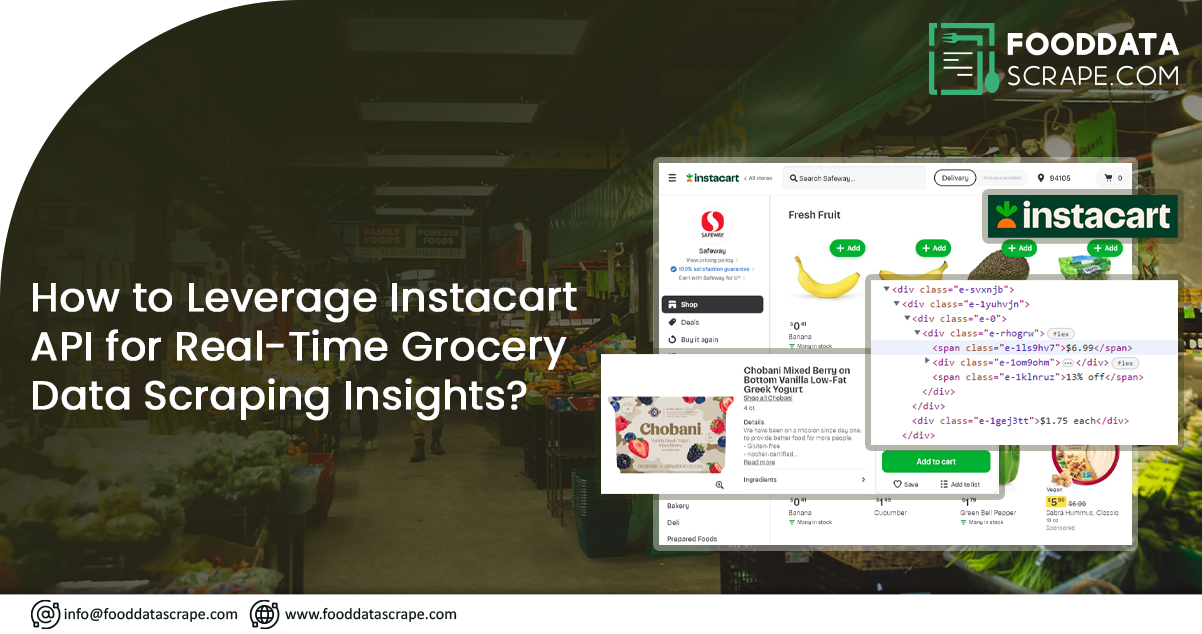Technology advancements have revolutionized how we shop from the comfort of our homes. With a few clicks on our smartphones, we can order food, browse a vast selection of products on platforms like Amazon, and even deliver groceries to our doorstep. Among the top grocery delivery apps, Instacart stands out, promising speedy deliveries in under an hour. A dedicated local shopper aids in gathering your desired items and ensures a seamless delivery experience to your home.
Instacart, a popular grocery delivery and pickup service, provides a valuable API that allows developers to access a wide range of grocery-related data. In this article, we will explore the process of scraping Instacart data using the Instacart API. By leveraging this API, users can extract essential information about grocery products, stores, and delivery services, opening up new possibilities for market research and data-driven decision-making.
About Instacart API
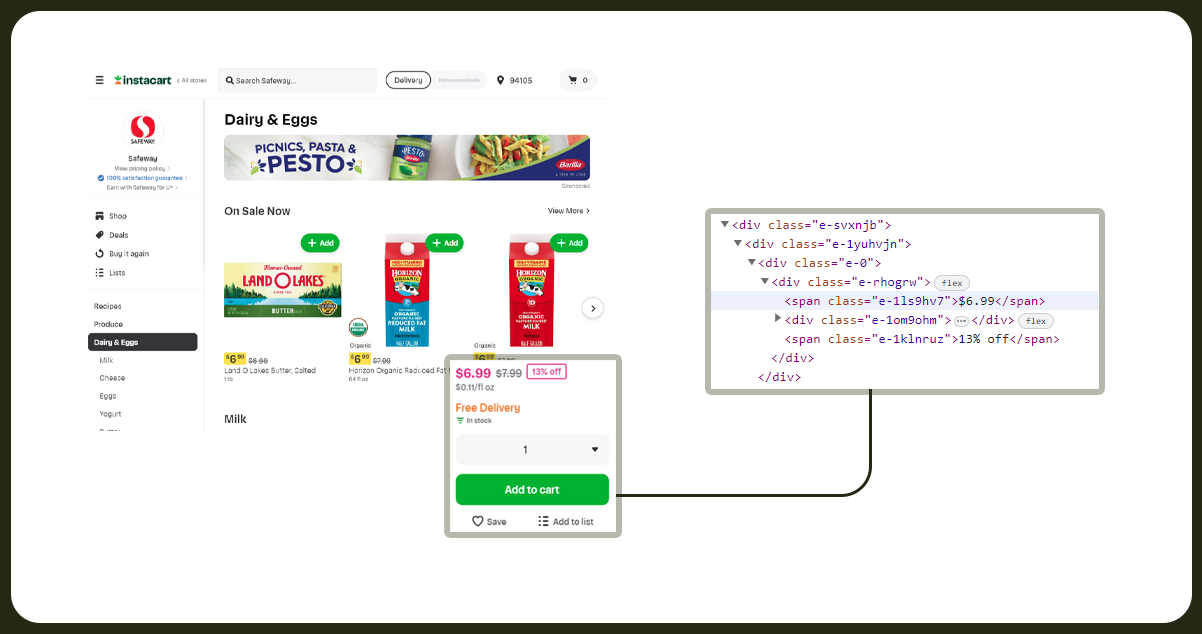
The Instacart API is a robust and versatile tool that grants developers real-time access to valuable data from the Instacart platform. Through this API, developers can retrieve a wide range of information, including details about products, stores, orders, and delivery services. Built on RESTful principles, the API boasts a user-friendly design and extensive compatibility with various programming languages and tools. It ensures a seamless integration process for developers, empowering them to harness the full potential of Instacart's data to enhance their applications and services. Whether it's analyzing product availability, optimizing store information, or tracking delivery status, the Instacart API scraping offers a comprehensive solution for leveraging real-time data in a user-friendly and efficient manner.
Steps to Scrape Real-Time Instacart Data Using Instacart API
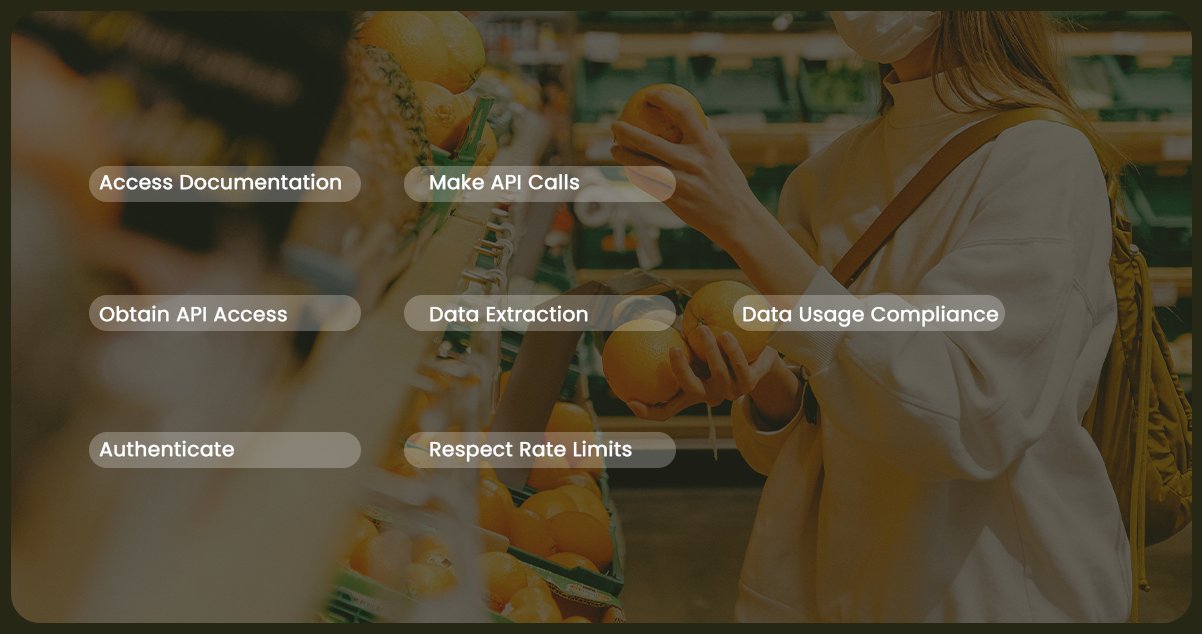
Follow these steps to effectively utilize Instacart's API for data extraction:
Access Documentation: Refer to Instacart's official API documentation, detailing endpoints, request methods, parameters, and authentication protocols.
Obtain API Access: If necessary, register for API access through Instacart's developer portal. This might involve creating an application to receive API credentials.
Authenticate: Follow the outlined authentication process, which could involve using API keys or OAuth tokens, to acquire the required credentials.
Make API Calls: Utilize a programming language like Python, commonly used for web scraping, to initiate HTTP requests to the API endpoints. Libraries like Python's "requests" can help with GET or POST requests.
Data Extraction: As you receive JSON-format data in response, parse the data to extract the specific information relevant for your purposes.
Respect Rate Limits: Keep in mind that APIs often have rate limits to prevent misuse. Adhere to these limits to avoid potential disruptions.
Data Usage Compliance: Make sure your use of the scraped data aligns with Instacart's permitted usage and terms. If uncertain, refer to their documentation or seek legal advice for clarity.
List Of Data Fields
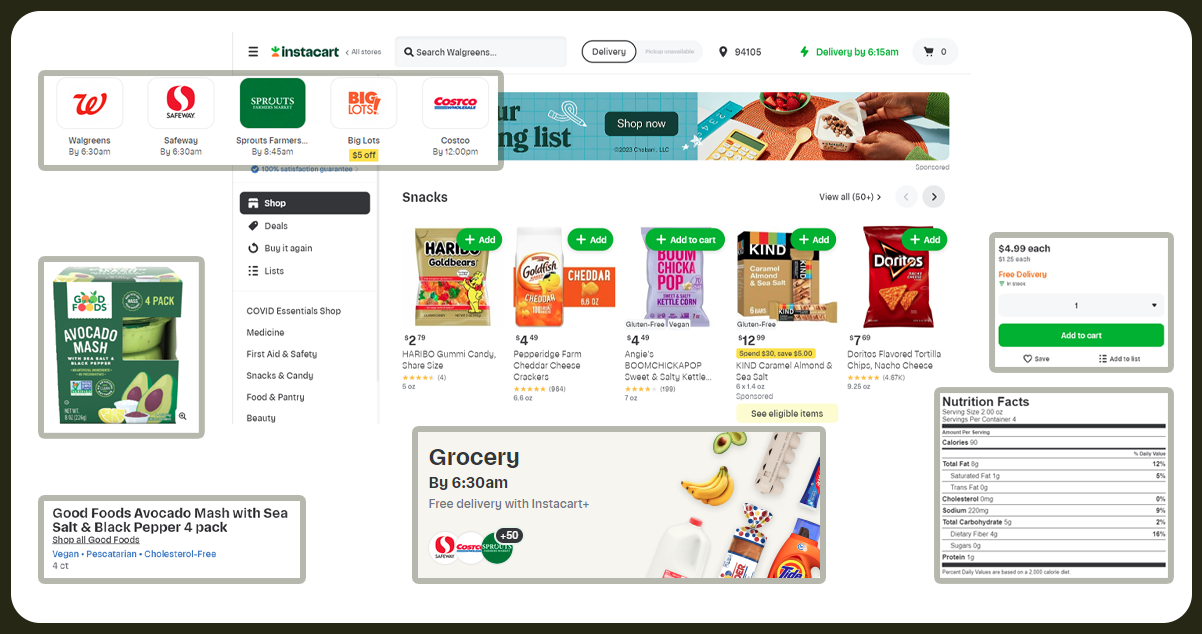
- Store Name
- Address
- Product name
- Product Description
- Product image
- Product SKU
- Offer and discounts
- Reviews/Ratings
- Product price
- Product Category
Why Scrape Instacart Grocery Delivery Data?
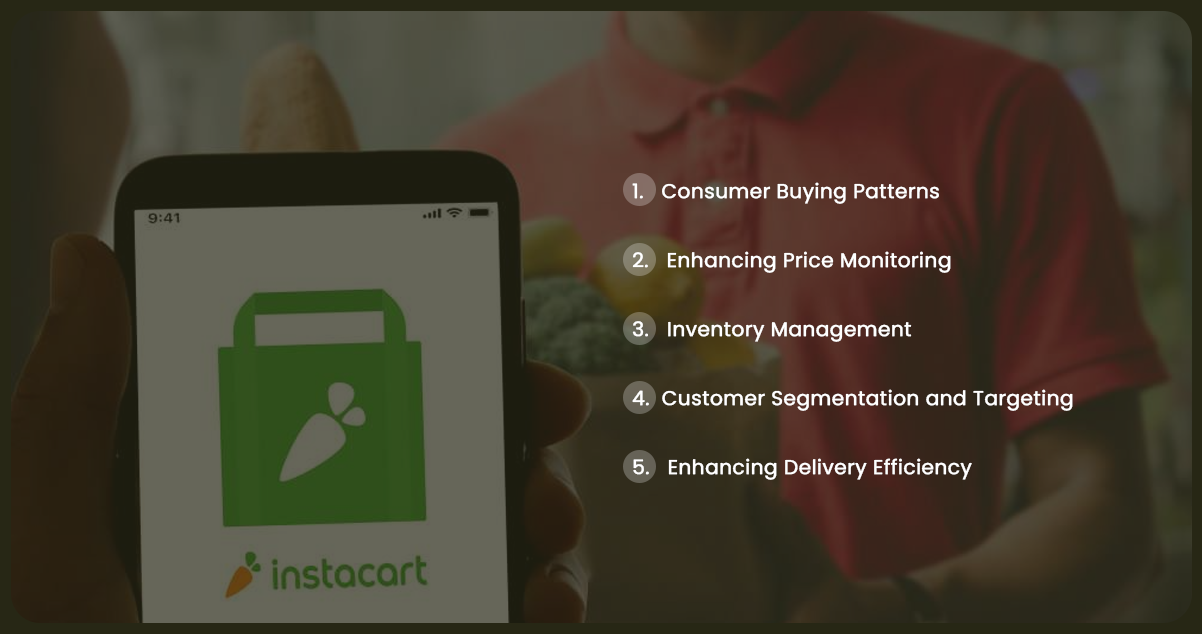
1. Consumer Buying Patterns: Grocery delivery services leverage supermarket data scraping to understand consumer buying patterns and optimize delivery operations. By analyzing data fields like purchase history, product preferences, and frequency of orders, they gain insights into customer behavior. It helps tailor personalized offers, promotions, and recommendations to enhance customer satisfaction and loyalty. Understanding the user-friendly interfaces and multiple payment options preferred by customers allows these services to create seamless shopping experiences, contributing to the growth of online grocery shopping. E-commerce options will continue to expand, providing retailers with valuable data on customer habits and enabling them to adapt their services to meet evolving needs.
2. Enhancing Price Monitoring: Effective price monitoring is crucial for companies selling products on grocery delivery platforms. Businesses can devise competitive pricing strategies by targeting data fields related to product prices, discounts, and competitor offers. Real-time price tracking helps them stay competitive and attract price-conscious customers. Monitoring competitor offers and discounts for supermarket delivery services provides valuable market intelligence. It enables them to refine their marketing policies, offer compelling deals, and position themselves strategically to attract more customers.
3. Inventory Management: Grocery delivery data scraping aids in efficient inventory management for grocery delivery services. By extracting data fields related to product availability, stock levels, and replenishment rates, these services can optimize their inventory and ensure that popular items are always in stock. It helps prevent stockouts and ensures a smooth shopping experience for customers. Additionally, it enables services to identify slow-moving products and plan promotions or discounts to boost their sales.
4. Customer Segmentation and Targeting: Grocery delivery services can segment their customer base by analyzing data fields like customer demographics, location, and purchase behavior. This segmentation allows them to create targeted marketing campaigns and promotions, tailoring their messaging to specific customer groups. Targeted marketing efforts improve customer engagement and conversion rates, ultimately driving business growth.
5. Enhancing Delivery Efficiency: Collecting data using Instacart API related to delivery times, routes, and customer preferences helps optimize delivery operations. Grocery delivery services can use this data to plan efficient delivery routes, minimize delivery times, and provide customers with flexible delivery options. Ensuring timely and accurate deliveries enhances customer satisfaction and builds brand loyalty.
For further details, get in touch with Food Data Scrape now! You can also reach us for all your Food Data Aggregator and Mobile Restaurant App Scraping service needs.
Get in touch
We will Catch You as early as we recevie the massage
Trusted by Experts in the Food, Grocery, and Liquor Industry




























































































